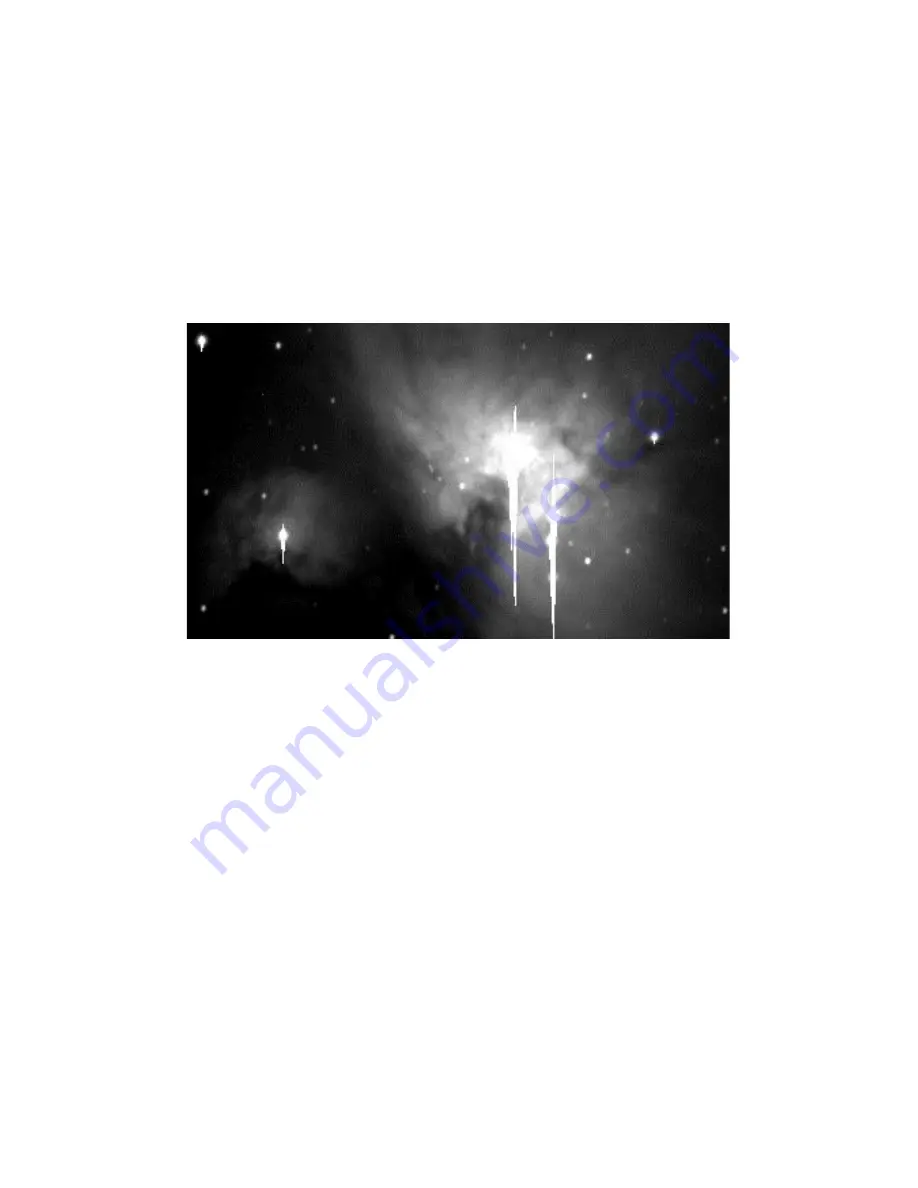
29
a full-frame CCD. Interline transfer CCDs give up some sensitivity because a sizeable portion of
the potential light gathering surface of the CCD is occupied by the masked storage columns.
The key benefit of interline transfer CCDs is that the shifting of the image into the masked
storage column acts like a very precise electronic shutter allowing short, accurate exposures.
Anti-blooming CCDs
CCDs are subject to an electronic artefact called “blooming” that results in bright vertical streaks
leading from bright objects.
The 60-second image above shows a portion of M42, the great nebula in Orion. The stars that
make up the centre of the nebula are much brighter than the surrounding nebula. Taking an
exposure long enough to show detail in the nebula causes the bright stars to bloom. Note that
some of the other brighter stars around the image also show varying amounts of blooming.
Blooming occurs when taking images of bright objects because when a pixel reaches its full well
capacity, say 100,000 electrons, the electrons literally overflow into adjoining pixels eventually
causing them to fill and overflow as well. In a severely bloomed image, the bright blooming trail
can lead all the way to the edge of the image. Data under a “bloom” is lost although there are a
variety of processing techniques that can be used to hide pixel blooms in a final processed
image.
Anti-blooming is a feature available on many full-frame and most interline transfer CCDs. Anti-
blooming technology limits the number of electrons that can accumulate in a pixel by draining off
excess electrons before they exceed the capacity of the pixel. This can increase the dynamic
rage of the CCD by as much as 300 times or more. This increase in dynamic range greatly
reduces the difficulty of imaging bright objects.
















































